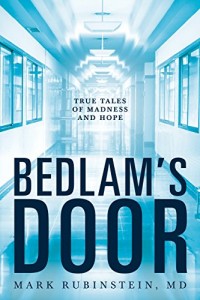 On October 18, 2016, Deborah Danner, a 66-year old woman, was shot to death by a police sergeant. Along with his fellow officers, he had responded to 911 calls from neighbors because she had been acting strangely. Records show the police had been called in the past to deal with Ms. Danner who had been tormented by schizophrenia since her twenties.
On October 18, 2016, Deborah Danner, a 66-year old woman, was shot to death by a police sergeant. Along with his fellow officers, he had responded to 911 calls from neighbors because she had been acting strangely. Records show the police had been called in the past to deal with Ms. Danner who had been tormented by schizophrenia since her twenties.
When the officers arrived on the scene, they encountered an agitated Ms. Danner brandishing a pair of scissors. When told to drop the scissors, she grabbed a baseball bat and charged toward the sergeant, who shot her twice. Although the officers had Tasers, lethal force was used against this sick woman.
Despite a recent but underfunded citywide effort to expand mental health care services, no mental health professional accompanied the officers to defuse the confrontation. The system failed Ms. Danner. It also failed the officers responding to the call.
This tragic case brings into focus a systemic problem in dealing with mentally ill people. Before the advent of antipsychotic medications, someone like Ms. Danner would have been institutionalized for years. But with the advances in prescription medicines, severe signs and symptoms of schizophrenia can be suffocated, obviating the need for long-term hospitalization.
Stabilized patients, armed with a prescription for antipsychotic medication, are now discharged from mental hospitals and sent out into the world where they can presumably lead reasonably normal lives.
But there is a catch—a very big one:
The medications must be taken every day—without fail—in order to be effective.
When patients stop taking their pills, or when life stresses escalate, the symptoms come rip-roaring back and the patient descends back into psychosis.
Floridly disturbed patients, like Deborah Danner, now cycle through psychiatric hospitals for short-term stays until their symptoms subside. Once stabilized, they’re back into the world with instructions to take their medication and follow-up at community mental health centers.
Underfunded out-patient facilities are overwhelmed by the influx of patients, resulting in people being seen only once every few months for only a few minutes per visit. The long interval between appointments and the brevity of each check-up doesn’t allow for proper monitoring, which lead to a “revolving door” cycle of short-term psychiatric hospitalizations, stabilization and release, followed by missed clinic appointments along with non-compliance taking medication, inevitably leading to a resurgence of madness.
When the police are called, as happened with Ms. Danner, they typically face an agitated, irrational, psychotic person who is often threatening and can inflict potentially lethal injury. Even an elderly, diminutive woman in a state of psychosis can pose an enormous risk to first responders.
Every day, in cities and towns throughout our country, police are called to quell disturbances caused by the mentally ill. Most encounters end uneventfully. But every now and then, a tragedy occurs like the one that befell Deborah Danner.
We ask our police to be mental health professionals without giving them sufficient training to safely diffuse these encounters. We refuse to sufficiently fund out-patient mental health centers, resulting in tragedies, in addition to contributing to the problem of mentally-ill homeless people.
Deborah Danner didn’t deserve to die. The sergeant who killed her shouldn’t have to face the rest of his life dealing with the action he took inside her apartment.
As a society, we must get serious about adequately funding mental health clinics and training our police officers so this kind of tragedy does not happen again.








 Recently, I read
Recently, I read